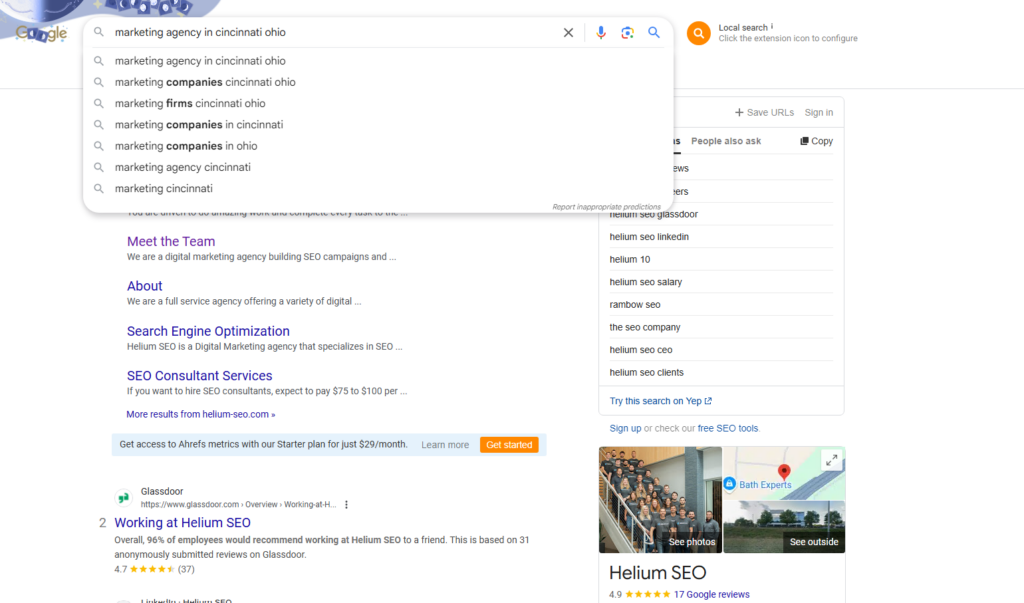A Comprehensive Guide to Search Engine Optimization Fundamentals
In today’s digital age, where online visibility can make or break a business, mastering Search Engine Optimization (SEO) has become more crucial than ever. At the cornerstone of effective SEO strategy lies a fundamental concept that drives everything from content creation to marketing campaigns: keywords. These powerful tools serve as the bridge between user intent and digital content, determining how easily your target audience can find you in the vast landscape of the internet. This comprehensive will go into the world of keywords, offering both beginners and experienced marketers valuable insights into their strategic implementation and optimization.
What are Keywords?
The concept of keywords extends far beyond simple search terms. They represent the connection between users and the content they seek, serving as the foundation of digital discovery and engagement.
Definition and Basic Concepts
Keywords are specific words or phrases that users type into search engines when looking for information, products, or services. They act as the primary signals search engines use to understand user intent and match it with relevant content. However, their role has evolved significantly from the early days of SEO, where simple keyword matching was sufficient. Today’s search engines employ sophisticated algorithms that analyze context, user intent, and semantic relationships to deliver the most relevant results.
For example, when a user searches for “best coffee machines,” they might be looking for product reviews, comparison guides, or purchasing options. Search engines must understand these various possibilities and present results that cover different aspects of the query, making keyword understanding increasingly complex.
The Role of Keywords in SEO and Content Strategy
Keywords form the backbone of any successful digital marketing strategy, influencing everything from website architecture to content creation. They serve multiple crucial functions:
- Content Planning and Development: Keywords guide content creators in developing materials that directly address user needs and interests. By understanding what terms your target audience uses, you can create content that resonates with them and answers their specific questions.
- Website Structure: Keywords help organize your website’s architecture, determining how pages are categorized and linked. This helps search engines understand the relationship between different pages and topics on your site.
- Performance Measurement: Keywords provide concrete metrics for measuring your content’s effectiveness, helping you understand which topics and approaches generate the most engagement and conversions.
- Competitive Analysis: By analyzing keyword performance, you can identify gaps in your market coverage and opportunities to differentiate your content from competitors.

How Search Engines Process Keywords
Modern search engines use incredibly sophisticated algorithms to process and understand keywords in context. This process involves several key components:
Semantic Understanding
Search engines now employ advanced natural language processing to understand the meaning behind keywords, not just their literal matches. This includes:
- Analyzing the relationship between words
- Understanding synonyms and related concepts
- Recognizing intent patterns
- Processing contextual clues
Content Quality Assessment
When evaluating keywords in content, search engines consider:
- Keyword density and placement
- Natural language usage
- Content depth and comprehensiveness
- User engagement metrics
- Authority and expertise signals
Types of Keywords and Their Purpose
Keywords come in various forms, each serving different purposes and targeting different stages of the user journey. Understanding these variations is crucial for developing a comprehensive SEO strategy.
Short-tail vs. Long-tail Keywords
Short-tail keywords (also known as head terms) are brief, general search terms consisting of one or two words. While they typically have high search volumes, they also face intense competition and often have unclear user intent. For example, “running shoes” is a short-tail keyword that could indicate various intentions, from research to purchase.
Long-tail keywords, conversely, are longer, more specific phrases that typically consist of three or more words. These keywords offer several advantages:
- More specific user intent
- Lower competition
- Higher conversion rates
- Easier to rank for
- More relevant traffic
For instance, “women’s waterproof trail running shoes for wide feet” is a long-tail keyword that indicates the user’s specific needs and likely purchase intent.
Informational, Navigational, and Transactional Keywords
Understanding search intent is crucial for keyword optimization. Keywords generally fall into three main categories based on user intent:
Informational Keywords
These keywords indicate that users are seeking knowledge or answers to questions. They often begin with:
- How to
- What is
- Why does
- Guide to
- Tips for
Users searching with informational keywords are typically in the research phase and may not be ready to purchase.
Navigational Keywords
These keywords are used when users are looking for a specific website or brand. They often include:
- Brand names
- Product names
- Company names
- Specific website names
Users employing navigational keywords usually have a clear destination in mind.
Transactional Keywords
These keywords indicate an intent to complete an action or make a purchase. They often include terms like:
- Buy
- Order
- Purchase
- Deal
- Discount
- Free shipping
Keyword Research and Implementation
Successful keyword implementation requires thorough research and strategic placement. This process involves several key steps and considerations.
Strategic Keyword Placement
Effective keyword placement requires a balance between optimization and natural content flow. Key areas for keyword placement include:
On-Page Elements
- Title Tags: Include primary keywords near the beginning
- Meta Descriptions: Incorporate keywords naturally while maintaining readability
- Headers (H1-H6): Use keywords in a hierarchical structure
- Content Body: Include variations of keywords throughout the content
- Image Alt Text: Describe images using relevant keywords
- URL Structure: Create clean URLs with relevant keywords
Content Optimization
Effective content optimization requires a delicate balance of several key elements. The content should maintain a natural language flow that reads smoothly while incorporating semantic variations and related terms to enhance topical relevance. It’s important to include your target keywords within the first 100-150 words of content, as this helps establish relevance early for both readers and search engines. However, you should maintain a proper keyword density of approximately 1-2% throughout the content, being careful to avoid keyword stuffing that could make the text feel forced or unnatural. The goal is to create content that serves both search engines and human readers effectively without sacrificing readability for the sake of optimization.
Common Mistakes to Avoid
While implementing keywords in your SEO strategy, be mindful of these common mistakes:
Keyword Stuffing
- Overusing keywords in an unnatural way
- Forcing keywords where they don’t fit
- Creating content solely for search engines rather than users
Poor Keyword Selection
- Targeting only high-competition keywords
- Ignoring long-tail opportunities
- Not considering user intent
- Focusing on search volume alone
Lack of Monitoring and Adjustment
- Not tracking keyword performance
- Failing to update content for changing search patterns
- Ignoring algorithm updates and their impact
Keywords remain a fundamental element of successful SEO and digital marketing strategies. By understanding their various types, implementing them strategically, and avoiding common mistakes, you can create content that not only ranks well in search engines but also provides value to your audience. Remember that keyword optimization is an ongoing process that requires regular monitoring, analysis, and adjustment to maintain effectiveness in the ever-evolving digital landscape.
Leveraging specialized SEO research tools like Noble Content Lab is essential for developing an effective keyword strategy. Noble Content Lab helps you identify high-potential keywords within your niche, analyze search volume and competition metrics, and ensure optimal keyword distribution in your content. Using the comprehensive keyword research data provided by the platform, you can create content that naturally incorporates relevant terms while avoiding over-optimization. This data-driven approach, powered by Noble Content Lab’s analytics, helps you balance search engine requirements with engaging, reader-friendly content that serves your audience and SEO goals.
